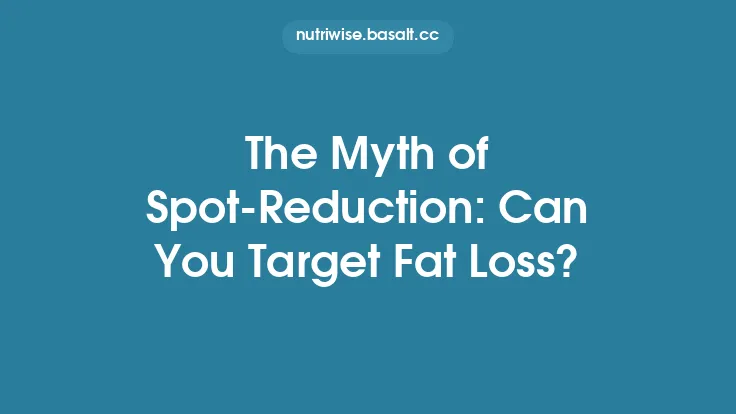Protein has become one of the most talked‑about nutrients in modern nutrition discourse. From bodybuilding forums to mainstream media, you’ll hear claims that “more protein equals more muscle,” “you need a protein shake after every workout,” or “high‑protein diets are the secret to rapid weight loss.” While protein is undeniably essential for growth, repair, and many metabolic functions, the hype surrounding it often blurs the line between evidence‑based recommendations and marketing hype. This article unpacks the science, clarifies common misconceptions, and helps you determine how much protein you truly need—no matter your age, activity level, or dietary preferences.
The Biological Role of Protein: Why It Matters
Protein is composed of amino acids, the building blocks of every cell in the body. Twenty‑nine different amino acids are required for normal physiological function, twenty of which are incorporated into proteins. Nine of these are essential amino acids—they cannot be synthesized by the body and must be obtained from the diet.
Key functions include:
- Muscle protein synthesis (MPS): The process by which new muscle proteins are built, crucial for growth, repair, and adaptation to exercise.
- Enzyme production: Enzymes catalyze virtually every biochemical reaction, from digestion to DNA replication.
- Hormone synthesis: Many hormones, such as insulin and glucagon, are peptide‑based.
- Immune support: Antibodies and cytokines are proteins that defend against pathogens.
- Transport and storage: Hemoglobin transports oxygen; ferritin stores iron.
- Structural integrity: Collagen, keratin, and elastin provide strength to skin, bones, tendons, and hair.
Because protein participates in so many processes, an inadequate intake can impair growth, wound healing, immune function, and overall health. Conversely, excess protein does not magically translate into more muscle or faster fat loss; the body has mechanisms to handle surplus protein, which we’ll explore later.
How Much Protein Do You Really Need? The Science‑Based Baselines
1. General Population (Sedentary Adults)
The Recommended Dietary Allowance (RDA) for protein, set by the Institute of Medicine, is 0.8 g per kilogram of body weight per day (≈0.36 g per pound). This amount is calculated to meet the nitrogen balance needs of 97–98 % of healthy individuals.
*Example:* A 70 kg (154 lb) adult would need about 56 g of protein daily.
2. Active Individuals and Athletes
Physical activity, especially resistance training, increases protein turnover. Research suggests the following ranges:
| Activity Level | Recommended Protein Intake |
|---|---|
| Endurance training (e.g., long‑distance running) | 1.2–1.4 g kg⁻¹ day⁻¹ |
| Strength/resistance training (moderate) | 1.4–1.7 g kg⁻¹ day⁻¹ |
| Strength training (high volume/intensity) | 1.6–2.2 g kg⁻¹ day⁻¹ |
| Elite athletes (multiple daily sessions) | 1.8–2.4 g kg⁻¹ day⁻¹ |
These values are based on studies measuring muscle protein synthesis, nitrogen balance, and performance outcomes. Importantly, the upper end of the range is not a “more is better” threshold; it reflects the point at which additional protein no longer yields measurable gains in MPS.
3. Older Adults (≥65 years)
Aging is associated with anabolic resistance, meaning older muscles respond less robustly to protein intake. To counteract sarcopenia (age‑related muscle loss), many experts recommend 1.0–1.2 g kg⁻¹ day⁻¹, with some evidence supporting up to 1.5 g kg⁻¹ day⁻¹ for those with high activity levels or chronic illness.
4. Special Populations
| Population | Suggested Protein Range |
|---|---|
| Pregnant & lactating women | 1.1–1.3 g kg⁻¹ day⁻¹ (additional ~25 g/day) |
| Individuals with chronic kidney disease (CKD) (stage 3–4) | 0.6–0.8 g kg⁻¹ day⁻¹ (under medical supervision) |
| Bodybuilders during bulking phases | 2.0–2.4 g kg⁻¹ day⁻¹ (often used, but not required for most) |
| Weight‑loss seekers (calorie deficit) | 1.2–1.6 g kg⁻¹ day⁻¹ to preserve lean mass |
These recommendations are guidelines, not rigid prescriptions. Individual needs can vary based on genetics, health status, and personal goals.
Myth #1: “More Protein = More Muscle”
The reality: Muscle growth is driven by a combination of mechanical tension (resistance training), adequate protein, and overall energy balance. Once you meet the protein threshold needed to maximize MPS (generally around 0.25–0.30 g kg⁻¹ per meal for most adults), additional protein does not further stimulate muscle synthesis.
*Key points:*
- Leucine threshold: Leucine, a branched‑chain amino acid (BCAA), acts as a molecular trigger for MPS. Approximately 2–3 g of leucine per serving is sufficient to activate the mTOR pathway, the central regulator of protein synthesis.
- Protein distribution matters: Consuming 20–40 g of high‑quality protein every 3–4 hours optimizes MPS across the day, compared with loading most of your protein in one or two large meals.
- Caloric surplus vs. deficit: In a calorie surplus, excess protein can be stored as fat if total energy intake exceeds needs. In a deficit, adequate protein helps preserve lean mass but does not magically increase muscle size.
Myth #2: “You Need a Protein Shake After Every Workout”
The reality: Whole foods and timing are both flexible. While post‑exercise protein can enhance recovery, the total daily protein intake is far more important than the precise timing of a single shake.
*Evidence highlights:*
- The “anabolic window” is broader than once thought. Studies show that consuming protein within a 2‑hour window post‑exercise yields similar MPS responses as intake up to 4–6 hours later, provided total daily protein is adequate.
- Whole‑food sources are equally effective. A chicken breast, Greek yogurt, or a cup of lentils provide the same essential amino acids as a whey shake, albeit with different digestion rates.
- Convenience factor. Shakes are useful for athletes who struggle to meet protein targets through food alone, but they are not a mandatory component of a successful nutrition plan.
Myth #3: “High‑Protein Diets Damage Kidneys”
The reality: In healthy individuals, protein intake up to 2.0 g kg⁻¹ day⁻¹ does not impair renal function. The kidneys adapt by increasing glomerular filtration rate (GFR) to handle the higher nitrogen load, a physiological response that is not inherently harmful.
*Important nuances:*
- Pre‑existing kidney disease requires protein moderation under medical guidance.
- Long‑term studies (≥5 years) in healthy adults show no increased risk of chronic kidney disease (CKD) from high‑protein diets.
- Hydration remains essential; adequate fluid intake helps the kidneys excrete urea and other nitrogenous waste products efficiently.
Myth #4: “All Protein Sources Are Equal”
The reality: Protein quality varies based on amino acid composition, digestibility, and bioavailability. Two concepts help evaluate protein sources:
1. Biological Value (BV) & Net Protein Utilization (NPU)
These metrics assess how efficiently the body uses absorbed amino acids. Animal proteins (e.g., eggs, dairy, meat) typically have BV > 80, while many plant proteins fall lower due to limiting essential amino acids.
2. Digestible Indispensable Amino Acid Score (DIAAS)
The newer, more precise method recommended by the FAO. A DIAAS ≥ 100 indicates a protein that meets or exceeds human amino acid requirements. Whey, soy, and certain animal proteins score high; legumes and grains often need complementary pairing (e.g., rice + beans) to achieve a complete profile.
Practical take‑away: If you rely primarily on plant proteins, ensure variety and combination to cover all essential amino acids. For most omnivores, a mix of animal and plant sources provides both high quality and additional nutrients (iron, B12, omega‑3s).
Myth #5: “Protein Supplements Are Necessary for Everyone”
The reality: Supplements are a convenient tool, not a necessity. Whole foods deliver protein along with micronutrients, fiber, and phytochemicals that supplements lack.
*When supplements make sense:*
- Convenient post‑exercise intake when whole foods are impractical.
- Meeting high protein targets in calorie‑restricted diets (e.g., during cutting phases).
- Specific dietary restrictions (e.g., vegans needing B12‑fortified protein powders).
*When they’re unnecessary:*
- If you can meet your protein goals through meals.
- When you have a balanced diet rich in diverse protein sources.
How the Body Handles Excess Protein
When protein intake exceeds the body’s needs for tissue synthesis and enzyme production, the surplus undergoes several metabolic pathways:
- Deamination: Amino groups are removed, forming ammonia, which the liver converts to urea for excretion.
- Gluconeogenesis: Carbon skeletons can be converted into glucose, providing energy, especially during low‑carbohydrate states.
- Lipogenesis: If caloric intake is high, excess carbon can be stored as fatty acids in adipose tissue.
Thus, excess protein can contribute to fat gain if total energy intake surpasses expenditure. It does not automatically “burn” more calories than other macronutrients, though protein does have a higher thermic effect (≈20–30 % of its calories are used for digestion and metabolism, compared with 5–10 % for carbs and fats).
Practical Strategies to Optimize Protein Intake
1. Calculate Your Personal Target
Use the appropriate range from the tables above, then convert to grams per day. Example for a 80 kg (176 lb) moderately active individual: 1.5 g kg⁻¹ = 120 g protein/day.
2. Distribute Evenly Across Meals
Aim for 20–40 g of high‑quality protein per eating occasion (3–5 meals/snacks). This ensures repeated stimulation of MPS.
3. Prioritize Complete Proteins
Include at least one complete protein source per day (e.g., eggs, dairy, meat, fish, soy, quinoa). If you’re vegetarian/vegan, combine complementary proteins (e.g., beans + rice) throughout the day.
4. Mind the Leucine Content
A serving containing ~2.5 g leucine (≈20 g whey, 30 g chicken, or 1 cup of lentils) is sufficient to trigger MPS.
5. Adjust for Training Demands
On heavy training days, slightly increase protein (by ~10–20 %) to support recovery. On rest days, maintain baseline intake to preserve lean mass.
6. Stay Hydrated
Adequate water intake supports renal clearance of nitrogenous waste.
7. Monitor Body Composition, Not Just Scale Weight
Track changes in muscle mass, strength, and performance rather than focusing solely on body weight.
Frequently Asked Questions (FAQ)
Q: Can I eat protein at night without gaining fat?
A: Yes, provided your total daily calories are within your energy balance. Night‑time protein can aid overnight muscle repair, especially after evening workouts.
Q: Are plant‑based proteins “inferior” for muscle building?
A: Not if you consume a variety of sources that together provide all essential amino acids. Studies show that well‑planned vegan diets can support comparable muscle gains to omnivorous diets.
Q: How much protein should I consume on a low‑carb diet?
A: On low‑carb or ketogenic diets, protein is often set at 1.2–1.8 g kg⁻¹ day⁻¹ to preserve lean mass while keeping carbs low enough to maintain ketosis.
Q: Do I need to count protein grams if I’m eating “clean”?
A: While precise counting isn’t mandatory for everyone, having a rough estimate helps ensure you meet your needs, especially if you have specific goals (e.g., muscle gain, weight loss, aging).
Q: Is “protein timing” important for older adults?
A: Yes. Older adults benefit from spreading protein intake across the day, with each meal containing at least 0.4 g kg⁻¹ to overcome anabolic resistance.
Bottom Line
Protein is a cornerstone of nutrition, but more isn’t always better. The optimal amount hinges on body weight, activity level, age, and health status. Meeting your individualized protein target—distributed evenly across meals, sourced from high‑quality foods, and aligned with your training schedule—will support muscle health, recovery, and overall well‑being without unnecessary excess. Supplements can be a helpful convenience, but they are not a substitute for a balanced, protein‑rich diet. By focusing on evidence‑based guidelines rather than marketing hype, you can demystify the protein myth and make informed choices that stand the test of time.





